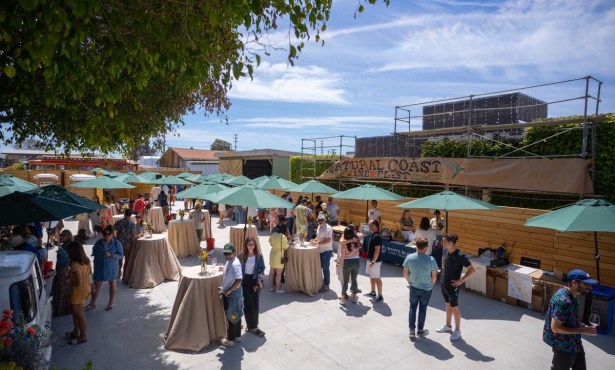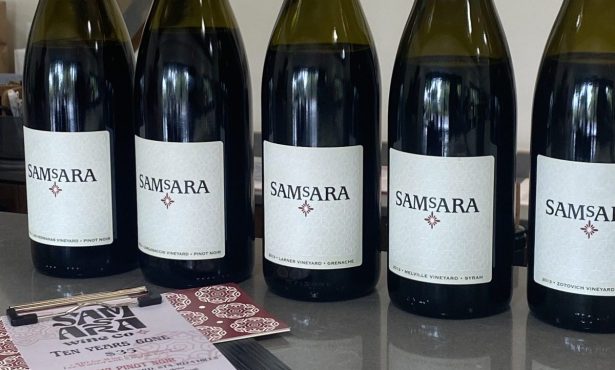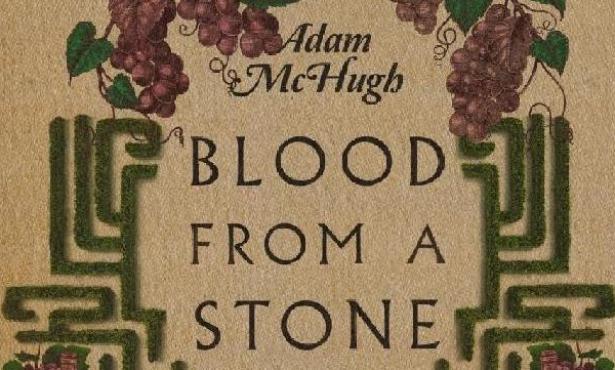Wine You Can Believe In
The Independent's Springtime Guide to Santa Barbara Sipping
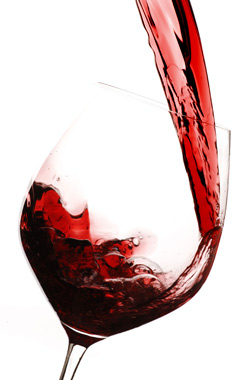
Once you calculate in the tourist-attracting power, it’s easy to argue that winemaking is Santa Barbara County’s most important industry. So in 2011, The Independent will be shining a brighter light on the people and places that make the business go ’round than ever before, both in the printed paper and every week at independent.com/wine. Here’s just a fraction of what we’ll be offering in the months to come.
Tasting
Since last summer, The Indy has put on a handful of office tastings in which we sampled our way through the smorgasbord of wines that gets delivered to us from around the world. In February, our tasting finally escaped the office and settled into the airy, people-watching dining room at the Pierre Lafond Wine Bistro (516 State St., 962-1455, pierrelafond.com) where waiter Ashton Wilson provided a full slate of fantastic flatbreads to accompany our sips of the following wines:
2008 Star Lane Sauvignon Blanc ($20): Though the tasting was blind, we knew to expect a Star Lane in the lineup, which meant we were ready for remarkable. This certainly didn’t let us down, as tasters noted the wine’s precision, complimenting its grapefruit essence, its bright, sharp acidity, and yet its illusion of softness on the palate.
2009 Château de Jau “Jaja de Jau” Sauvignon Blanc ($10): Explaining this bottle’s funny name actually introduces its contents nicely: France’s Roussillon region slangily uses the word “jaja” to refer to its more casual, everyday wines. This fit that bill, with summer fruit flavors like bananas and peaches, making it well worth its price tag.
2008 Bargetto Winery Pinot Noir Santa Cruz Mountains ($25): Since we haven’t sampled much from Santa Cruz yet, Bargetto’s pinots had us all intrigued. Not only that, but Bargetto’s been fermenting grapes for 75-plus years and runs on biodiesel and solar power. We found this wine light and rich with hints of black cherries, although slightly over-oaked; but we deemed it a good “entry-level” pinot noir.
2008 Bargetto Winery Pinot Noir Santa Cruz Mountains Reserve ($40): Because the reserve spends an additional five months in barrels compared to Bargetto’s other pinot, we were nervous that the oak on this one would be overkill. But the quality fruit used to create the reserve clearly can withstand so much time in barrel, so we happily found more character, tannin, and a better food companion.
2006 Star Lane Cabernet Sauvignon ($42): Hailing from Bordeaux varietal-friendly Happy Canyon, this cab (with 18 percent cabernet franc, 3 percent petit verdot, and one percent malbec) had us smitten upon first sip. Tasting notes ran wild, with descriptions like wet stones, violets, and mocha to comments praising its rich, balanced headiness.
2008 Liberty School Cabernet Sauvignon ($14): The ultra-low cost of this wine makes it hard to disagree with — after all, drinking wine is supposed to be a low-stress activity and a hefty price tag can certainly make many of us sweat. With that in mind, we enjoyed Liberty School’s contribution to our tasting, noting its mellower body and flavors like eucalyptus, licorice, cherry, and spice cake.
This summer, we plan to coordinate our efforts into a wine club for our readers, who will be able to subscribe to seasonal deliveries of our favorite bottles. Email wine@independent.com if curious. — CS
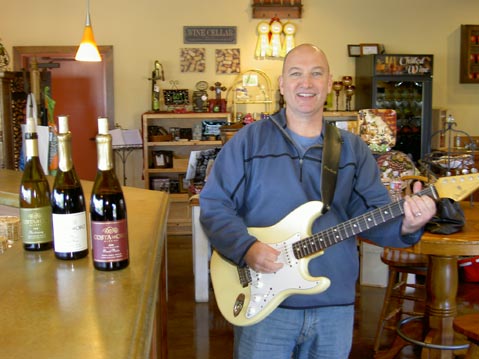
Touring
Stratocaster Sipper: Gary Burk of Costa de Oro Winery
“Music and wine are both universal languages,” says Gary Burk, the accomplished guitarist, former record label employee, and owner of Costa de Oro Winery. “They speak to people on an emotional level — no translation necessary.” Burk finds many parallels between playing music and crafting dynamic wines — primarily, trusting the intuitive rhythms of the creative process.
After graduating from Cal Poly and working as a royalty accountant for the music biz, Burk worked from 1994 to 2002 for Au Bon Climat’s Jim Clendenen after returning to the Santa Maria Valley, where his family has farmed broccoli, spinach, and cilantro since the 1970s, as well as pinot noir and chardonnay since 1989. He broke out on his own to found Costa de Oro (the tasting room is located right off Highway 101 in Santa Maria) with 2,500 cases in 2002, and now makes about 6,500 cases annually.
As a winemaker, he feels that it’s important to be conscious of chemistry but able to act on an instinctive level. “I go with gut feeling with wine as much as I would a guitar solo,” he says. “You’ve got to be able to sense when to play softly and when to rip and really go for it.” — LS
See www.cdowinery.com.
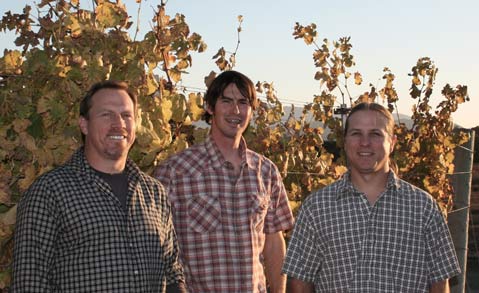
Boys’ Club: Dragonette Cellars
Though “hand-crafted” is an expression often overused in the wine industry, the purple-knuckled gentlemen of Dragonette Cellars — brothers John and Steve Dragonette and close friend Brandon Sparks-Gillis — employ it very literally in describing the conscientious handling and hard labor that goes into making their wines. We caught up with the dynamic trio recently./p>
Favorite food and wine pairing? Homemade fig and blue cheese flatbread with our sauvignon blanc is heaven. We also made an amazing boeuf bourguignon once with a barrel sample of syrah and paired it with our ’06 pinot noir.
Music in the cellar? We like to play music that brings harmony to the wine we’re working with: anything from Jack Johnson to Metallica. Last harvest we played the Beatles, lots of Led Zeppelin, Vampire Weekend, and Kings of Leon.
Toughest part of harvest? Finding time to sleep. And cleaning. Oh yeah, and staying dry. We’re literally soaked for three months straight.
What under-$15 wines do you enjoy? Chinons and Savennières from the Loire and tasting-room deals from friends.
Most important piece of equipment? Our taste buds, of course, and a stainless steel sump that we pretty much use for everything.
Best part of your job? Making great connections with new people. We love to see the looks we get when we taste through the wines and then ask, “Do you want to try something from the barrels?” An hour later, these complete strangers are ambassadors for our wine and our story.
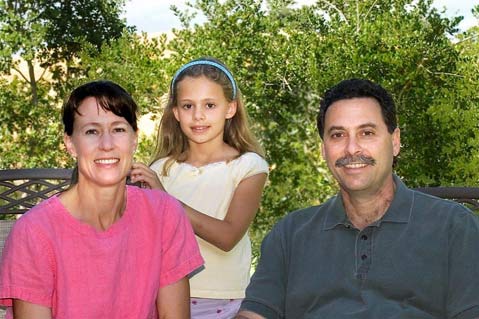
Power Pair: John and Helen Falcone
While most winemakers struggle to keep wine from completely taking over their lives during the demanding months of harvest, John Falcone frets more about anything that may distract him from it. With his wife, Helen, his primary business partner, it’s easy for the two — who make wine for Rusack and their own Falcone label — to keep their hearts in the winery and vineyards.
“I look forward to that adrenaline rush of pouring all of my energy toward one thing for two months out of the year,” said John of harvest. “I don’t have to look at the calendar; I don’t need to know what I’m doing next Saturday; I don’t need to know what I’m going to be doing tomorrow night.” Helen shares John’s sentiment. “I’m so glad I get to be at the winery for long hours, for several days, weekends,” she mused. “It’s exciting and inspiring to me.”
Tasting wine at the family table and a winery newsletter fan since age 12, Helen studied food science at UC Davis in 1981, where she was discouraged from switching to an oenology major because women weren’t then considered serious winemakers. She’s proven that advice totally wrong. John, a self-proclaimed “junior college dropout,” says he “lucked into” the trade after ditching the classroom and looking to family for work. “It’s farming, it’s winemaking, it’s art, it’s chemistry,” he said. “It’s a whole lot of things wrapped up into one fun lifestyle.” — CS
See falconefamilyvineyards.com and rusackvineyards.com.
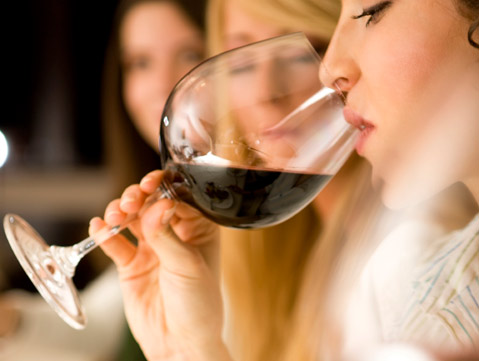
Tasting Room 101
Most of us learn how to behave in restaurants, airports, and dozens of other public spaces at such a young age that, by the time we’re grown up, we know how to properly patronize them on autopilot. Wine tasting rooms, on the other hand, are approached by many with ambivalence and uncertainty, without parental guidance or a clue to social protocol. Take our tips.
1) Know the purpose of tasting rooms: They are vessels to sell you bottles of wine, not party venues. Once upon a time tasting was free, the same way test-driving a vehicle at a car dealership is free, but now they charge because it’s become a social pastime.
2) Tasting rooms are not wine bars: Do not ask for a glass of wine unless the tasting room overtly offers it, which means it has acquired the same special licenses that bars possess in order to serve alcohol by the glass.
3) Learn to spit: Getting a buzz is part of the fun, but tasting at several wineries will inevitably take you from dapper to disheveled no matter how well you hold your booze. And while spitting may seem utterly counterintuitive while attempting to demonstrate personal classiness and respect for the wine, you’ll accomplish both by doing so.
4) Sacrifice beauty: Ditch the cologne and lipstick when you go taste. Everyone is more interested in smelling the wine than you, and lipstick refuses to come off of wine glasses.
5) If in doubt, make a reservation: Some tasting rooms could comfortably accommodate a herd of elephants, but others are more like walk-in closets. Groups of more than four tasters are polite to call ahead of time.
6) Get a driver: Taste safely and responsibly. Despite being a more socially accepted manner of day drinking, it’s still drinking. Designate a driver or try out one of the many local wine-tour companies Santa Barbara has to offer. — CS
Trends
Wine on Tap
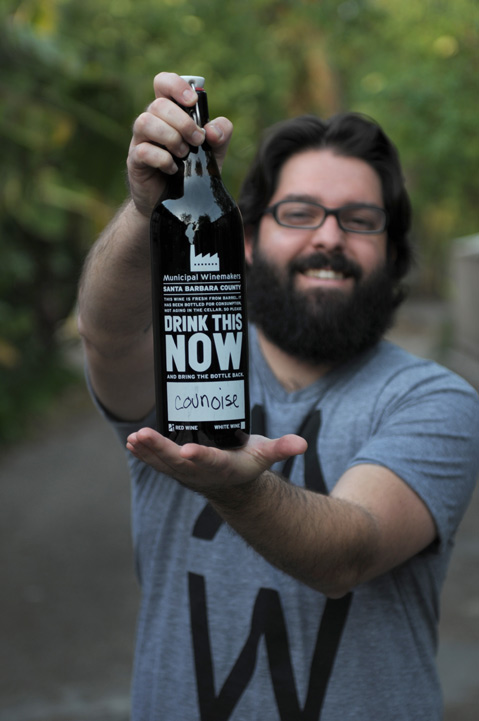
Taking a hint from their microbrewing buddies, winemakers in Santa Barbara County are turning to the tap as a more eco-friendly and affordable option for selling their juice. Carr Winery (414 N. Salsipuedes St., Santa Barbara; 965-7985; carrwinery.com) led the way in January 2010, filling the first reusable bottle with its Quonset Hut Red (a syrah-cabernet franc blend) or pinot grigio for $25, and offering $15 refills. Today they offer a 2009 pinot gris and a 2008 El Guapo (80-percent syrah / 20-percent grenache) and plan to bring a pinot noir and rosé come this spring. “It’s a good concept, and it’s an old concept,” said winemaker Ryan Carr, who’d only previously seen the technique in Italy. “For whatever reason, we lost it.” Helping to bring back the trend are Municipal Winemakers (28 Anacapa St., Santa Barbara; 931-6864; municipalwinemakers.com), which is now serving a 2010 chenin blanc from Curtis Vineyard and a 2008 counoise from Purisima Mountain Vineyard and gives the seventh refill free, and, up the road in Lompoc, Palmina Wines (1520 Chestnut Ct., Lompoc; 735-2030; palminawines.com), with Tavola Rosso (red) and Tavola Bianco (white) table wines. — MK
Wine in Bag
Glass bottles are sooooo 20th-century. That’s what Pierre LaBarge IV believes, so he’s putting his 2009 Central Coast Pinot Noir and 2009 North Coast Sauvignon Blanc in the nearly eco-perfect and keep-it-fresher Astrapouch, a South African-made bag containing two bottles’ worth of juice and costing just $20, that can be easily hauled from your fridge to the campfire and back again. LaBarge, a native of St. Louis, Missouri, and a Cal Poly viticulture grad who leaves the winemaking up to Alan Phillips, the former Foley Estates vintner and current Terravant Wine Company director, explained, “Scores may still matter, but what matters more is what the consumer enjoys. They want good wine at good prices. It’s that simple.” We’re sold. See indulgewines.com — MK
To-Dos
Vineyard Worker Benefit Dinner: Third annual gourmet six-course dinner by Chef Jina Bae of A-RU Japanese Restaurant in Buellton, paired with specially produced local wines, to benefit the services provided to the county’s vineyard workers by the nonprofit organization Santa Ynez Valley People Helping People. A-RU, 225 McMurray Road, March 13, 5 p.m., $125 total. Call 686-9001 or see syvphp.org.
Vintners’ Festival Weekend: The best place to check out what’s new and great about our wines, as every one of the more than 130 members of the Santa Barbara County Vintners’ Association must show up to pour at the main event. Great food and weekend tasting-room deals, too. River Park, Lompoc, April 16, 1-4 p.m., $75, plus dinners and tastings elsewhere, April 15-18. See sbcountywines.com.
Tantalized?
EMAIL: If you’d like to learn more about our wine club, find out how your winery could be tasted and profiled, or just want to say hi, email wine@independent.com.
WEB SITE: For future wine stories, bookmark independent.com/wine today.

